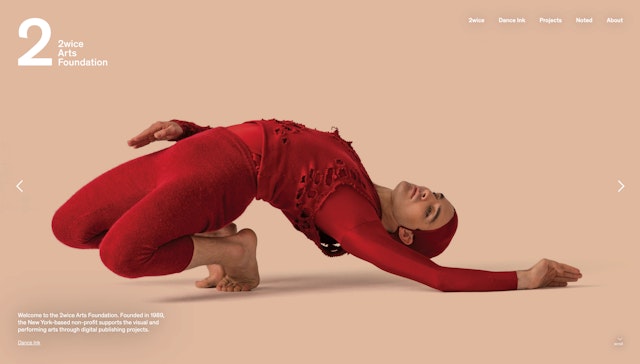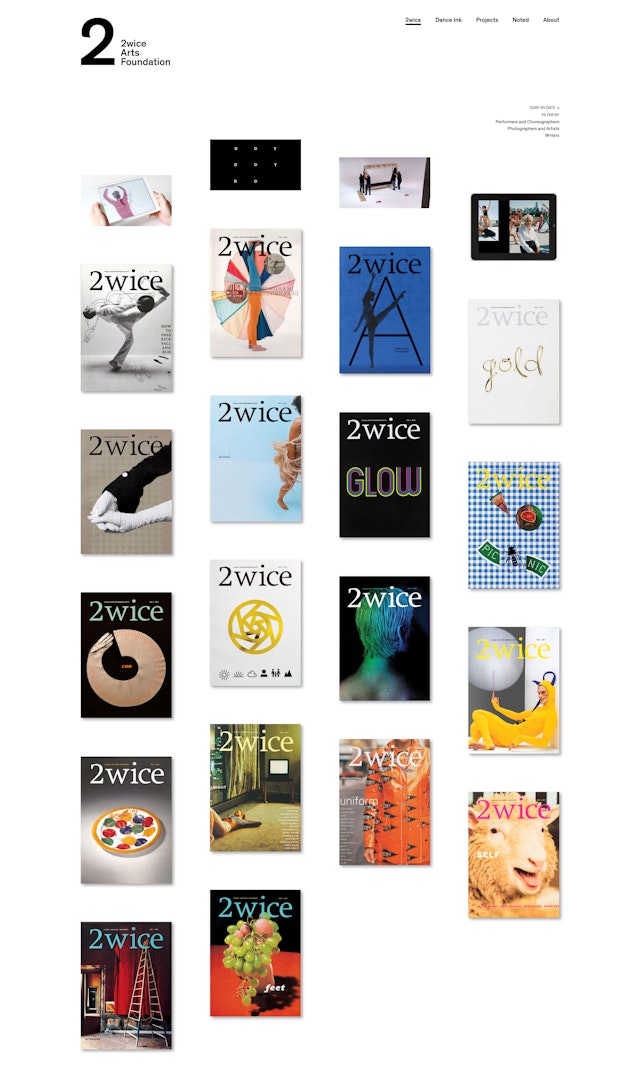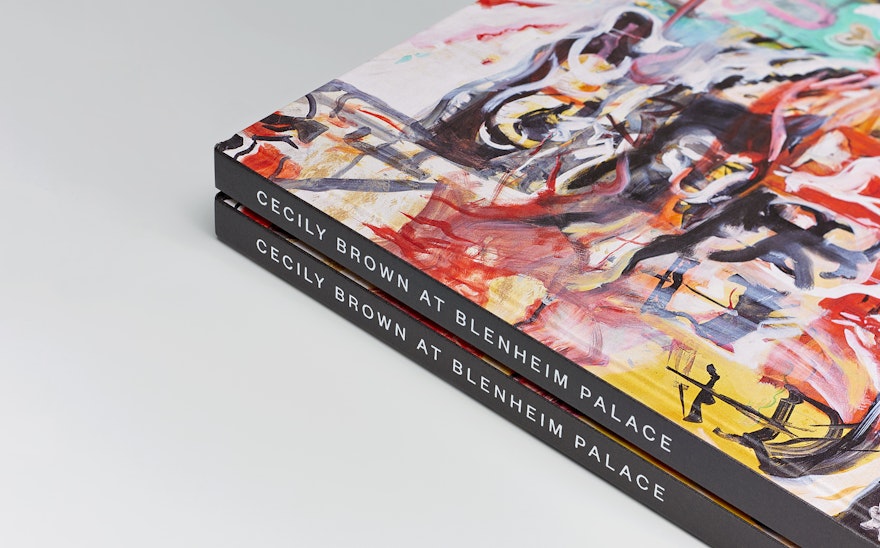

The new site substantially increases access to past issues, offering over 700 images of the magazines and other projects.



The archive can be filtered by choreographer, performer, photographer, artist and writer, allowing users to explore collaborations across issues.


Founded in 1989, the 2wice Arts Foundation is a pioneering organization that supports dance, choreography, and the visual arts. For over 30 years Pentagram partner Abbott Miller has collaborated with 2wice's founder Patricia Tarr on various projects, including the award-winning publications Dance Ink and 2wice, several books and exhibitions, and a series of mobile dance apps that explore new ways to present dance and choreography for the iPad and iPhone. Miller and his team have created a new website for 2wice that provides a digital platform for future works and hosts an archive of its activities from 1990 onwards.
Dance Ink (1987-1996 and 2016-2017) and 2wice (1997-ongoing) conceived of the magazine—and later the screens of apps—as a space for performance, a particularly ephemeral art form. Miller designed, art directed and later edited the publications, working with Tarr to develop and commission collaborations with performers, choreographers, photographers and writers. Each issue was visually distinct, responding to the editorial focus and the performers and photographers that were featured.
The website collects highlights of the work and makes it accessible to a wider audience. Visitors can dig into older issues, many of which have never been seen before digitally. (2wice previously published two collections of photography, Dance Ink: Photographs and Dance 2wice.) The site also establishes an online home for the foundation and a basis for its activities.
2wice has presented collaborations with choreographers and performers across American modern and contemporary dance—with a New York concentration—including giants such as Merce Cunningham, Twyla Tharp, Paul Taylor, Trisha Brown and Alvin Ailey, along with influential figures like Mark Morris, Karole Armitage, Charles Atlas, John Kelly and Willie Ninja, as well as the next generation of choreographic talent such as Justin Peck, Pam Tanowitz and Jonah Bokaer, among many others. The performances were documented by and in many cases conceived with leading photographers including Christian Witkin, Andrew Eccles, Josef Astor, Timothy Greenfield-Sanders, Joachim Ladefoged, Martin Schoeller, Pari Dukovic and more.
The website opens with a carousel of striking images that fill the full frame of the homepage. The widescreen presentation highlights the site as another stage for performance and immerses visitors in the world of 2wice.
The design focuses on functionality and depth, a neutral framework for future works and a “lightbox” to examine images from past issues of the magazine. The archive can be filtered by criteria such as publication date, choreographer, performer, photographer, artist or writer, allowing viewers to explore collaborations across a run of issues. The site collects the 2wice mobile apps, books and exhibitions in the “Projects” section, and “Noted” highlights new pieces and updates from the 2wice community of creators.
Dance Ink and 2wice contributed to the visual culture of the performing arts, as well as to photography and graphic design. Miller and Tarr looked back to the legacy of publications like Flair, Du, Aspen, and FMR, art magazines conceived as a curated exhibition-like venue. Both Dance Ink and 2wice presaged the indie magazine boom of the 2000s, when specialized, niche publications with high production values and limited runs flourished as mainstream press started to move online.
Early editions of Dance Ink reflected the NYC scene of the late 1980s and early 90s, including a strong emphasis on photography. 2wice reduced the publishing frequency to twice a year—hence the name—but broadened the editorial content beyond dance to the larger world of art and design—though the performing arts remained a connecting through-line. 2wice focused on a single topic and looked at these themes through the lens of art, fashion, design, architecture, and literature.
In 2012 2wice launched the first in a series of apps that turned the interactive platform of the iPad and iPhone into a performance space. Each of the apps—Fifth Wall, Dot Dot Dot and Passe-Partout—featured a collaboration between Miller and the guest choreographers and musicians to create a new work that would take advantage of the unique spatial and physical parameters of the mobile device. The apps continued the tradition of commissioning “site-specific” performances, and the possibilities of user interaction.
